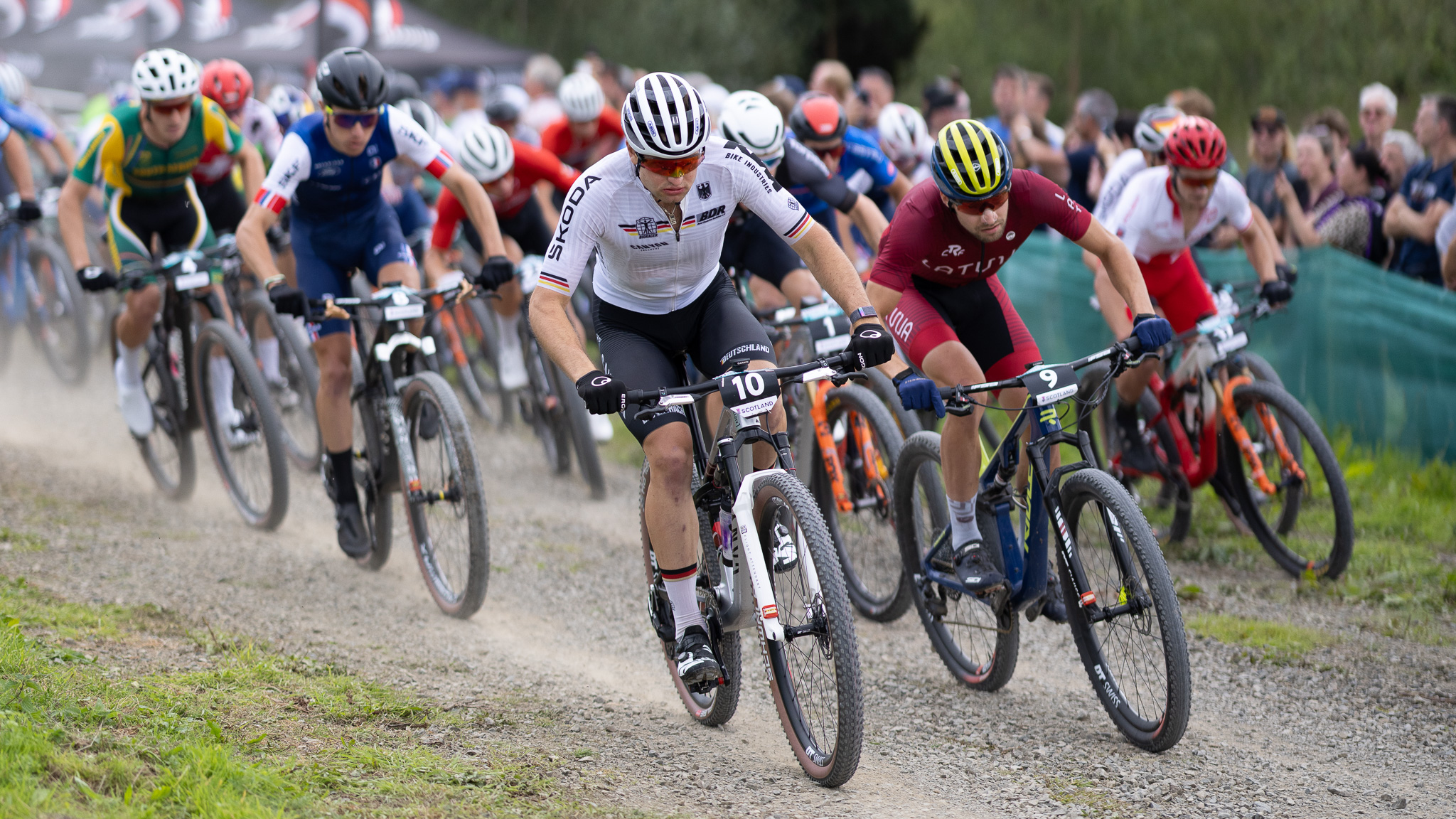
After an awesome week of World Championships racing with arguably the biggest two races still to go, the biggest racing binge of the year has mostly been a TV triumph. It started last week with the downhill up at Fort William and the XC Marathon around Innerleithen and Glentress. Then it’s picked up again in the Tweed Valley from midweek, with the weird world of e-bike XC and exciting if not confusing relay races, then working through age categories and the short track XCC events before peaking with the men's and women’s Elite XCO on Saturday.
Why Glentress matters in Brazil
Writing this on Friday several things have already been made clear though. Firstly downhill and marathon exist at utterly opposite ends of the participation versus public exposure spectrum. Very few riders actually strap on body armor, D-ring up a full face, stick a number on and then send it super hard down a proper race course as the seconds tick by. Even fewer pay full price for a new DH bike rather than being at least partially sponsored or just getting something secondhand. Watching the world's best leave the start hut high on a genuine mountain and ricochet down the rocks and drops of Aonach Mor, through the techy, slippery woods, and onto the final dirt jump ‘motorway’ was the must-see of last weekend though. Especially in the UK after English rider Charlie Hatton took the win on a Welsh-built bike in typically British conditions.
In contrast, while literally tens of thousands of riders line up for marathon races across Europe most weekends through the season, the best you could find in terms of World Championships XC Marathon coverage were very short highlights mainly concentrating on the men. XCM has only just been bundled into the bigger World Cup picture after decades of happily doing its own thing with far more riders paying to play than you’d ever get for pure DH and XC racing.
In terms of viewing figures though XC has been outstripping DH since 2018. By 2019 the audience had increased to nearly eleven million - over ten times the number who’d tuned in throughout 2015. If you include summaries, recaps, highlights, syndication, and news clips, the overall audience for MTB racing was 82 million. While I’ve not been able to find official figures yet, the much bigger overall audience exposure that MTB racing will have from being part of the Discovery Channel / Warner Brothers is hopefully going to push those numbers even higher. Even just on a tactical level the fact that the BBC has been showing a lot of MTB this week surely has to help spread the stoke towards people scrolling through screen options or waiting for their normal preferred program to start.
However, while DH and Marathon paint very different pictures in terms of spectator versus competitor watching, XC in its various forms is definitely increasing. Perhaps most importantly for mountain biking as a whole, XC connects with a far wider demographic in terms of global engagement. While DH has its biggest audiences in traditional MTB heartlands like North America, Canada, UK, and Northern Europe, XC is becoming more and more popular in South America, Middle East, and the Far East as well as the historic strongholds of Spain and Italy. Riders like the Brazilian Henrique Avancini are genuine celebrities in their regions and that’s only going to grow when he brings back a World Championship winner's Rainbow striped jersey from the XC Marathon event at Glentress.

XC is XCiting now
While the growth of XC in new areas has been a big factor in the rise of the numbers, the last year has definitely seen a big surge of interest in the fast up AND down side of the sport in the territories that have previously been DH focused in their media habits at least. And anecdotally at least that’s because the XC racing of the last few years is unrecognisable from what it was.
While skinsuits and aero road helmets don’t exactly shout steeze, if you’ve ever ridden with a top racer you’ll know they’re not just lactate-addicted aerobic monsters, most of them can REALLY handle a bike too. The increase in obvious course technicality over recent years has had a twofold benefit though. The images you see from XC coverage are far more likely to engage with people than before. I’ve seen different shots of that gap jump on the XC course on Glentress countless times on social media over the past few days and the live coverage is loving that section of serious commitment flow too.
The need for bikes to be able to not just survive but thrive on a course like that has transformed them in terms of versatility and appeal to general riders. I’ve been test riding the brand-new Trek Supercaliber XC race bike this week. In the grand scheme of things its 80mm of travel, inverted stem carbon cockpit, and skinny barely treaded tires definitely make it more old skool compared to the increasingly common 120mm travel, 2.4in tire bikes being blasted around between the tapes. I took it out on a 40km trail ride with some significant techy singletrack descent sections and flat-out extended rubble descents last night though and it was totally fine. The 120mm ‘XC’ bikes my mates were riding alongside me were clearly even more in their element too.

Fun sells
In other words XC not only looks more fun but the bikes being designed for it are also a lot more fun. Crucially for people getting involved - or watching the sport to see if they should worry about their kids/partners etc. being involved - it doesn’t stray into the downright scary territory of full-face helmets and sickening scorpion crashes. That’s really important to potential sponsors too as big brands like Lidl are getting on board for these champs to connect with a healthy lifestyle, not just sell more first aid kits and bunches of flowers. At this point, I’m starting to stray into a whole other area of discussion about sport development and commercial concerns though so I’ll save that for another time.
The bottom line is that, if you’ve got a chance to watch it - and to encourage others to watch it - I’d definitely recommend you catch the XCO elites races tomorrow. Because after years of XC MTB being something of a freaky sideshow, it’s really developing into a sports star in its own right now.
And with heart disease and obesity at an all-time high showing people that you can have a lot of fun on a bike counteracting both those killers has surely never been more important.







